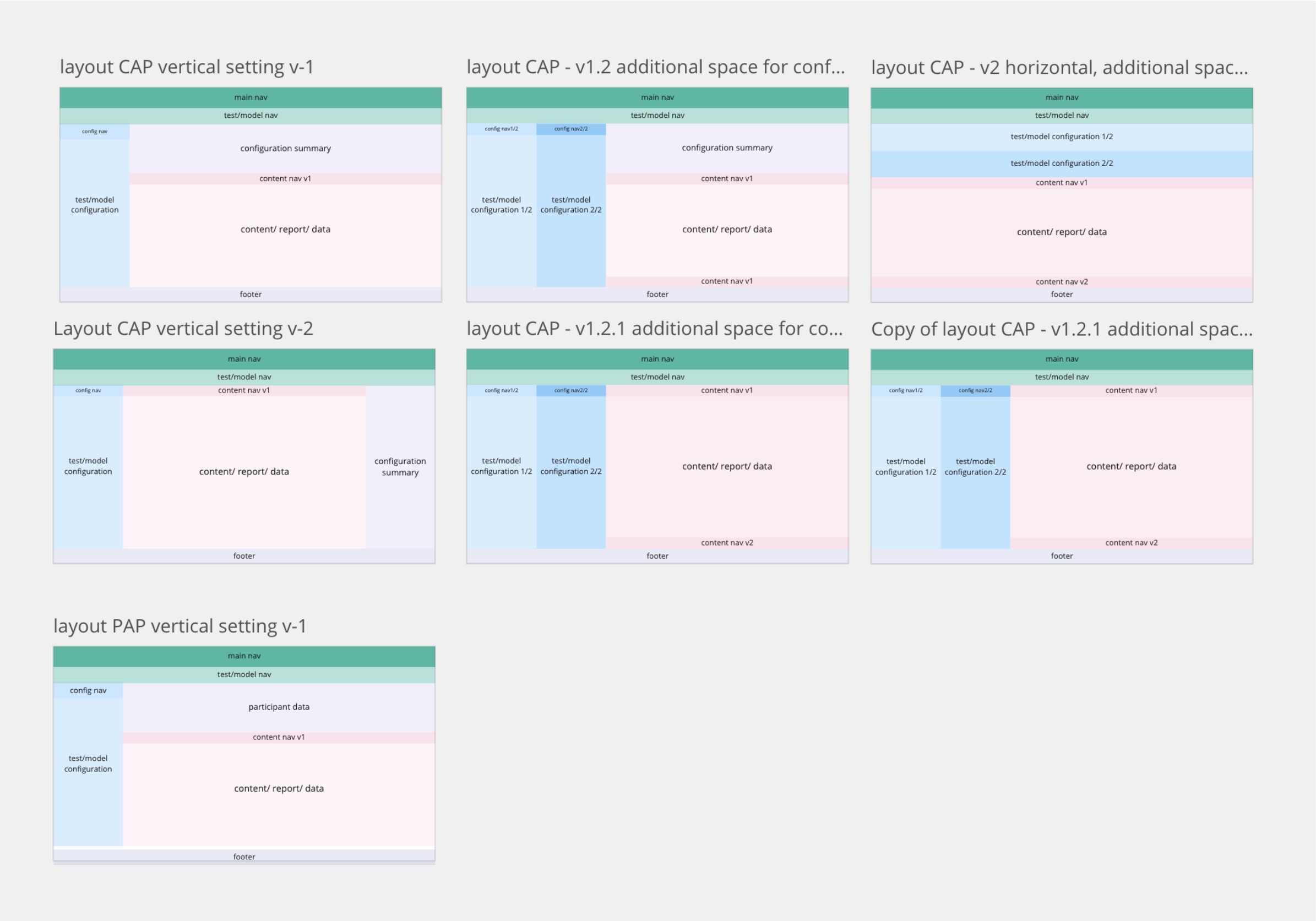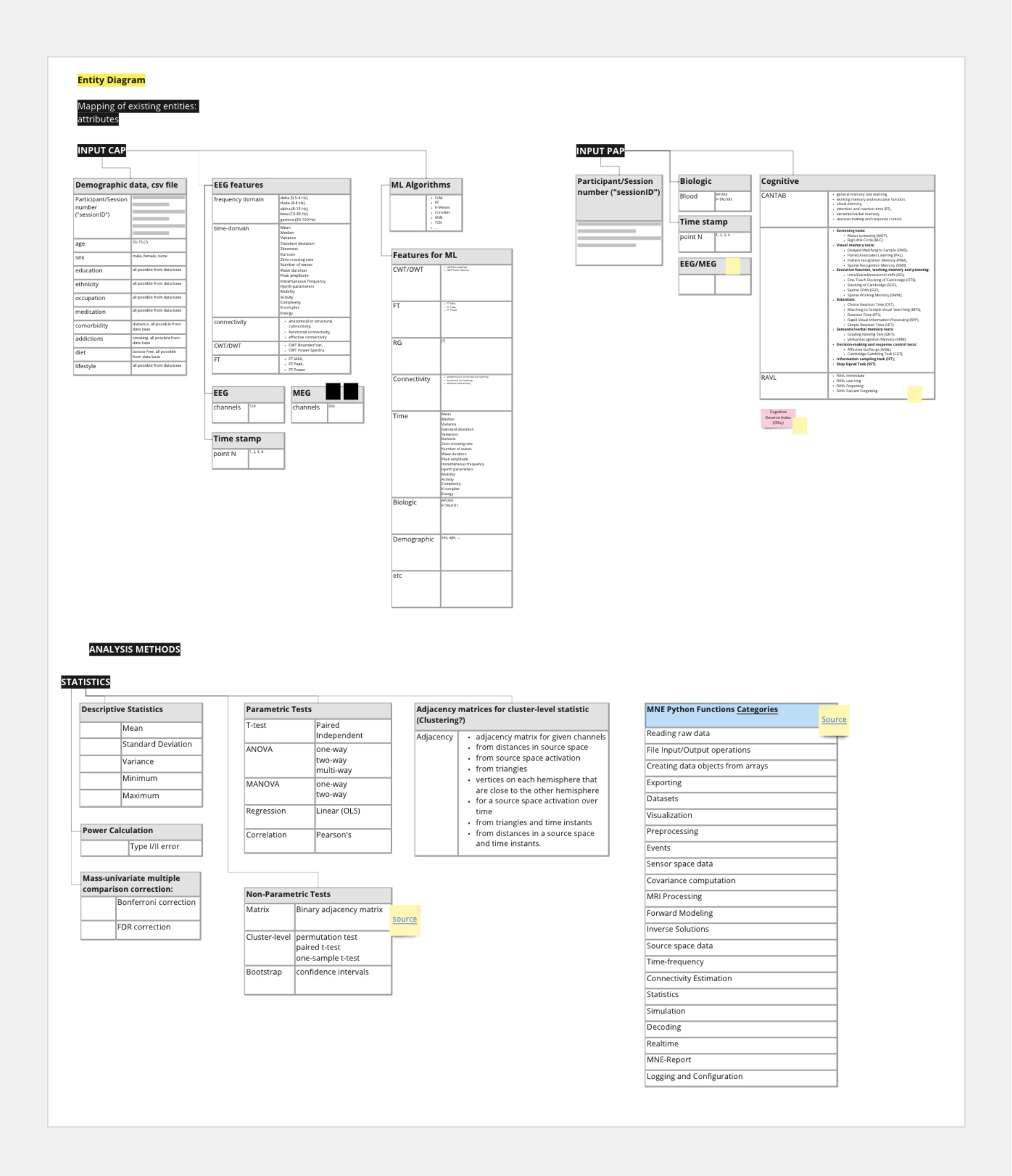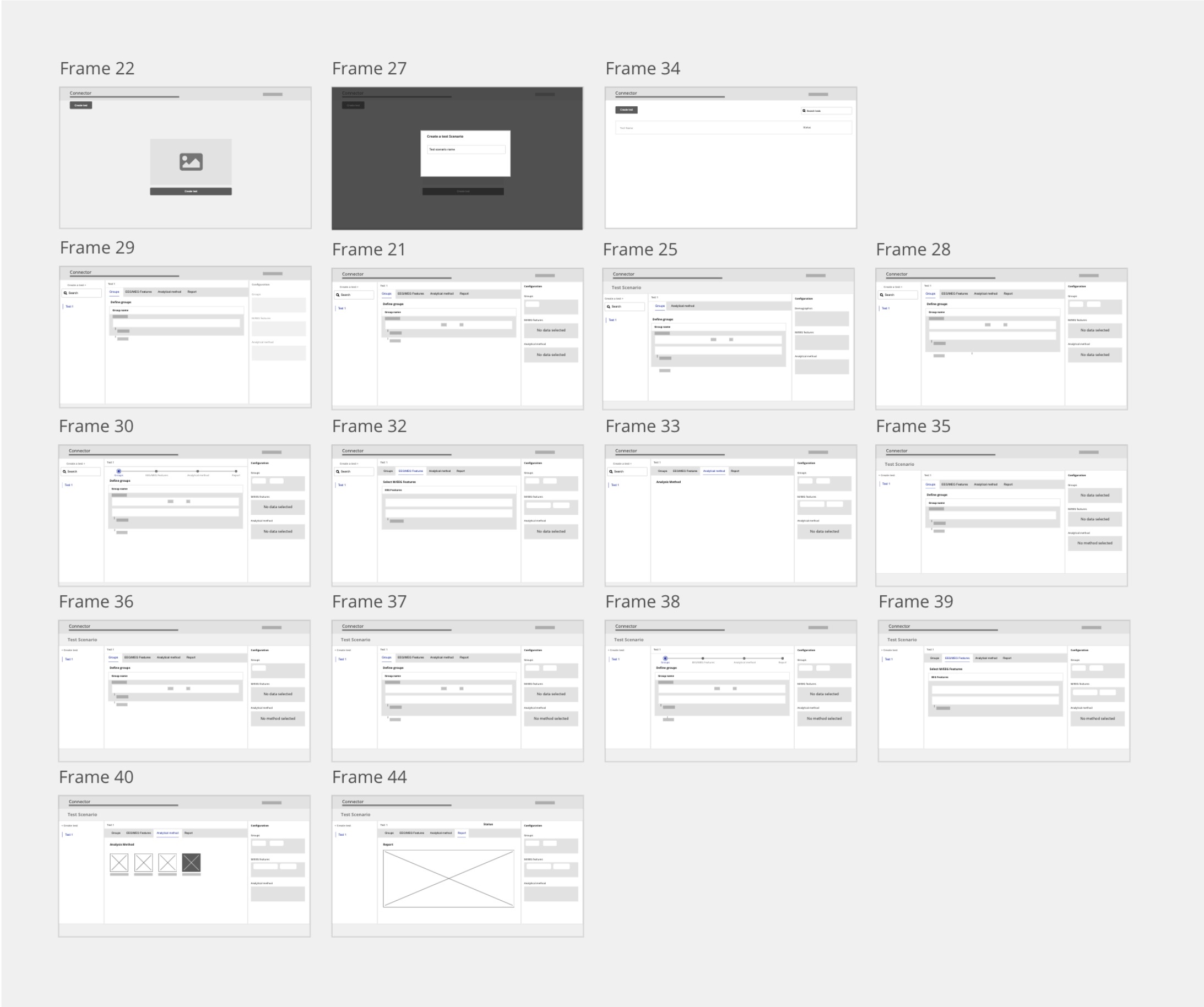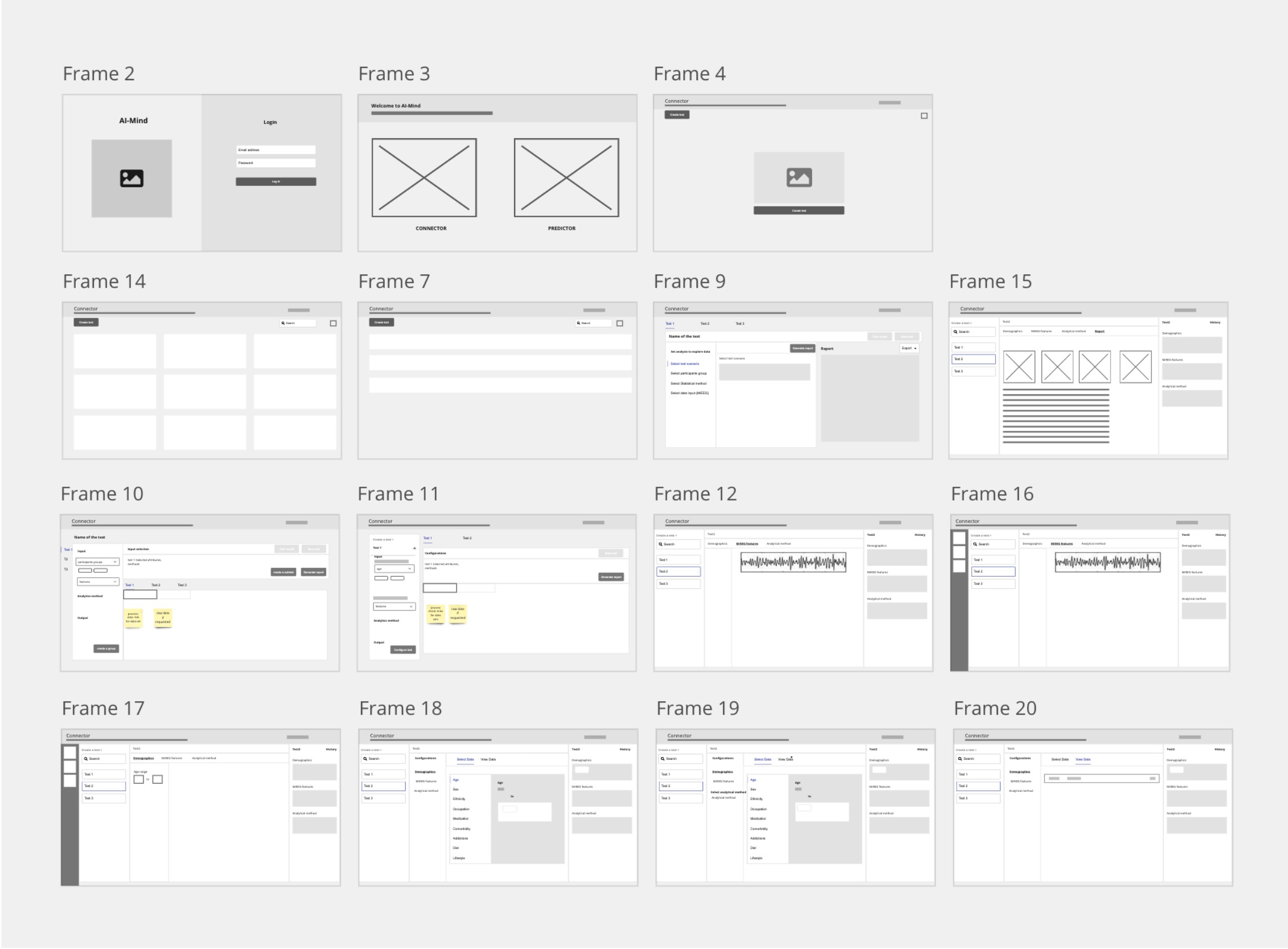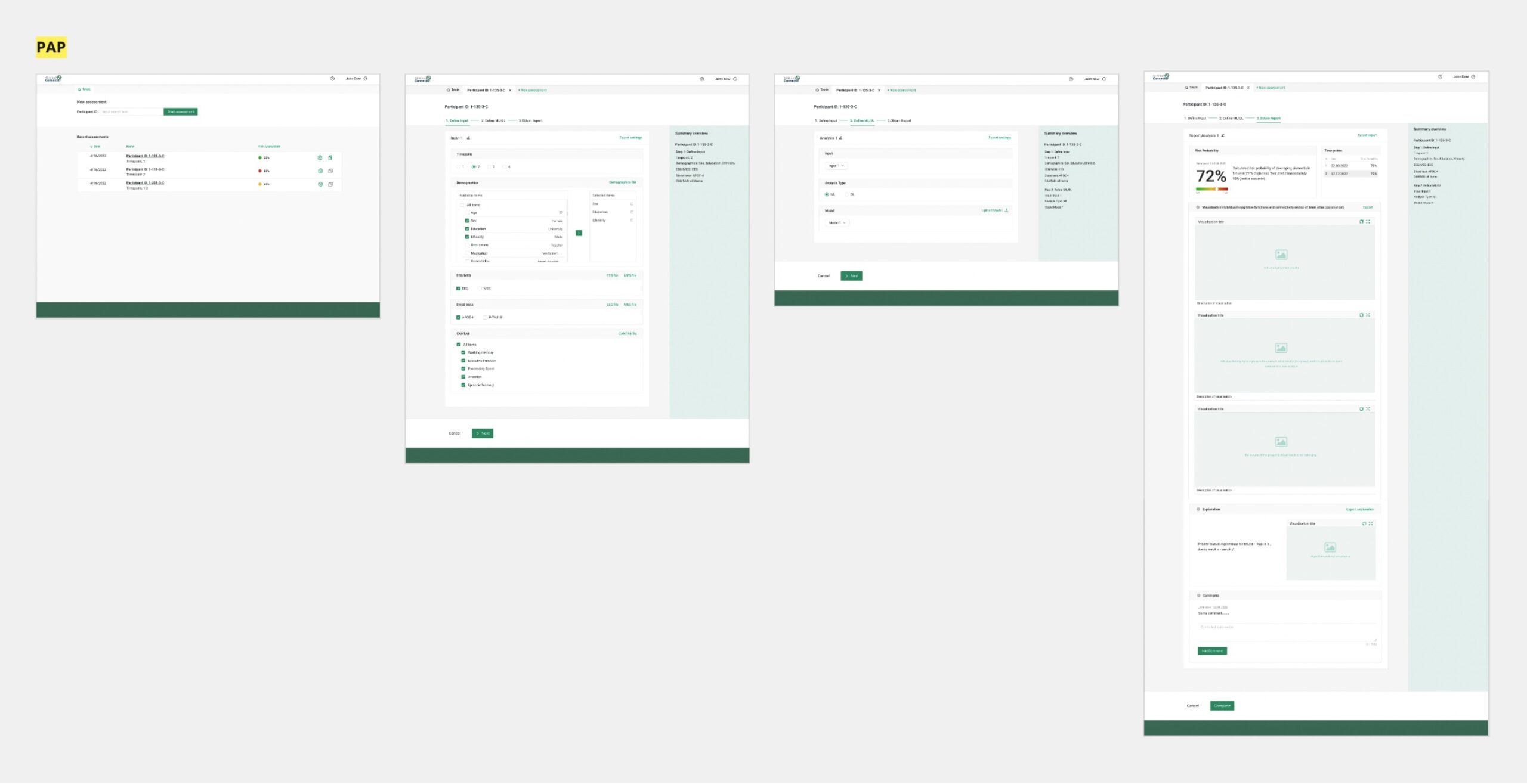AI-Mind digital tools: Artificial intelligence for dementia prevention
2021-2022 • Role: UX Researcher and Designer (project Lead)
Summary
Currently, no single test or set of criteria can definitively diagnose dementia when a person develops mild cognitive impairment. Diagnosis is typically based on a combination of clinical evaluation, cognitive testing, and brain imaging, which can be time-consuming and expensive.
Doctors lack the appropriate tools to understand better people’s likelihood of developing dementia at some point.
Our team was responsible for designing two digital tools from scratch to support the decision-making process for clinical researchers and clinicians to diagnose dementia at an early stage.
As the Senior Design Researcher, I took an active role in all process stages, from planning to execution. My responsibilities included designing and conducting the research phase and contributing to the overall design of the tools.
Following the completion of the research, our team utilized the collected data to create artefacts such as Personas, Scenarios, User Journey Maps, and User Stories. These artefacts served as a communication tool with stakeholders and as a foundation for the iterative design process, during which we created wireframes and high-fidelity user interface mockups. This approach allowed us to refine our designs based on user feedback and stakeholder input.
DISCLAIMER: While this case study represents my work and my team’s work, I am limited in what I can share in compliance with my Non-Disclosure agreement. Graphics in this case study are intentionally obscured. If this case study interests you, please contact me privately for additional discussion.
Team
- Head of the group
- UX Researcher and Designer
- UX Researcher
- UX/UI designers (2)
Partners
- 15 partners around the Europe
- 5 Hospitals: Norway, Italy(2), Spain, Finland
Project link:
Challenges
• Uncertainty in a new, innovative field
The AI-mind digital tools are innovative solutions with no direct competitors, which meant that our team was working with high uncertainty.
• Multi-disciplinary stakeholder involvement
With a wide range of stakeholders involved in the project, including clinicians, neuroscientists, data scientists, EEG engineers and representatives of NGO Alzheimer Europe, among others, our team needed to ensure that all stakeholders’ needs were collected and aligned with the project goals.
• Variations in clinical practices
With five hospitals from different countries, our team had to be aware of differences in clinical practices, protocols, and procedures to ensure that AI-mind digital tools were aligned with the needs and regulations of all hospitals involved.
• Field-specific terminology
We worked hard to ensure that the language used in the solutions user interface was appropriate and understood by all stakeholders.
• Complications due to COVID-19
The COVID-19 pandemic brought additional complications to research and design activities, which had to be conducted mainly online. We had to be creative in finding ways to collaborate and communicate effectively despite the challenges of remote work.
Process
Approach
The overall approach for the project was a User-centred design with the following stages: Understanding, Defining, Designing, and Evaluating. Several iterations were performed during the project.
Secondary research
In collaboration with a UX researcher, we conducted a competitive analysis primarily focused on healthcare digital tools designed to support the decision-making process using AI. Our analysis also included investigating Human-Centered AI explanations and complex analysis settings. Our goal was to identify and map industry best practices.
Primary research
I designed and conducted semi-structured interviews with 15 participants in two iterations. The second iteration took place since it was necessary to adapt the interview questions to cover appeared gaps during the first interaction of interviews.
I set the following goals for the primary research:
1. Discover stakeholders’ current context, needs, goals, processes, and decision-making flow when diagnosing dementia.
2. Learn about stakeholders’ current frustrations and barriers when diagnosing dementia and how they would improve it.
3. Uncover the current tools stakeholders use to diagnose dementia and their experience with those tools. Uncover how they would improve those tools.
Analysis
Affinity mapping was performed to analyse transcribed interviews according to predefined topics. The data analysis and production of artefacts were conducted in collaboration with a UX researcher by utilizing Miro online whiteboard.

During affinity mapping, we clustered data according to predefined themes such as user goals, needs, tasks and processes, frustrations, scenarios of use, and data to support decision-making processes. Also, some new themes appeared during the analysis process. For instance, participants often talked about the user interface and data visualisation.
Research Impact
The research insights were presented to stakeholders to discuss possible users of digital tools and led to a rethink of the scope of the work in 5 years perspective and aligning the project goal to fit available resources.
Digital experience design
Proto personas, Scenarios of use, User journey maps, and user stories
Collaborating with a UX Researcher, we sensitise the research data into Proto personas, Scenarios of use, User journey maps, and user stories. UX design artefacts were discussed with stakeholders and updated where necessary. During the discussion, it was decided to focus on one primary persona and one secondary persona, reducing the number of potential users of the tools.

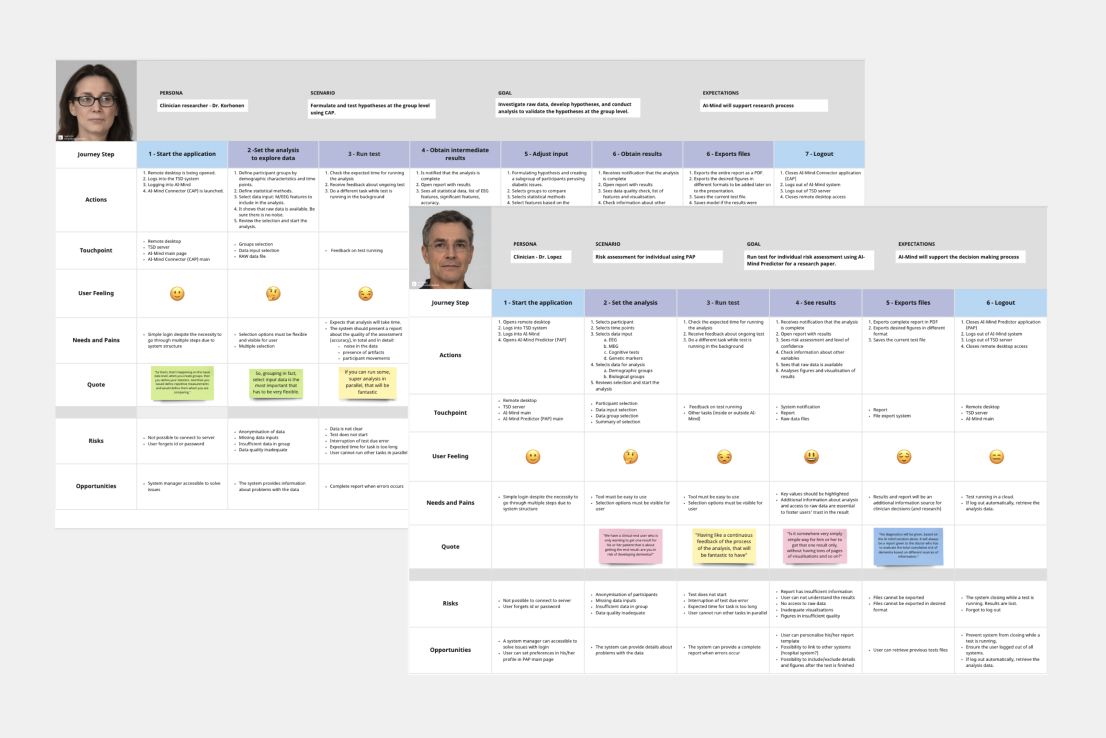


Low-fidelity prototyping
After updating User journey maps and User stories, two UX/UI designers joined the team to support the design process. I conducted brainstorming sessions to ideate and decide on a layout and low-fidelity design.
I decided to utilise Entity diagraming to organise classifications with possible options.

Low-fidelity evaluation
I planned the formative research, prepared the protocol and moderated the script to conduct task-based user testing to evaluate low-fidelity wireframes. Because of the AI-Mind digital tools’ complexity and time constraints participants received wireframes before the meeting to explore and left their comments on designs asynchronously on the online Miro board. I moderated the session, and the UX researcher asked follow-up questions and annotated the design.
During the sessions, we discussed the proposed interface’s usefulness and usability. I raised points regarding the context of use and technical implementation of the proposed functionalities, highlighting issues for further discussion with stakeholders. Also, we improved the user flow according to evaluation feedback and implemented a 5-step interaction process, complemented by substeps when relevant. Additionally, we designed internal platform to manage and monitor data pipeline.
Hi-fidelity mockups
I used findings from low-fidelity user testing to design high-fidelity mockups for the AI-Mind digital tools using Figma. The mockups are highly detailed in terms of appearance, data, and spatial structure, with a clear navigational scheme that closely resembles the final product. While the prototypes have limited functionality due to ongoing machine learning and deep learning technical development, the key features are presented in the mockups.
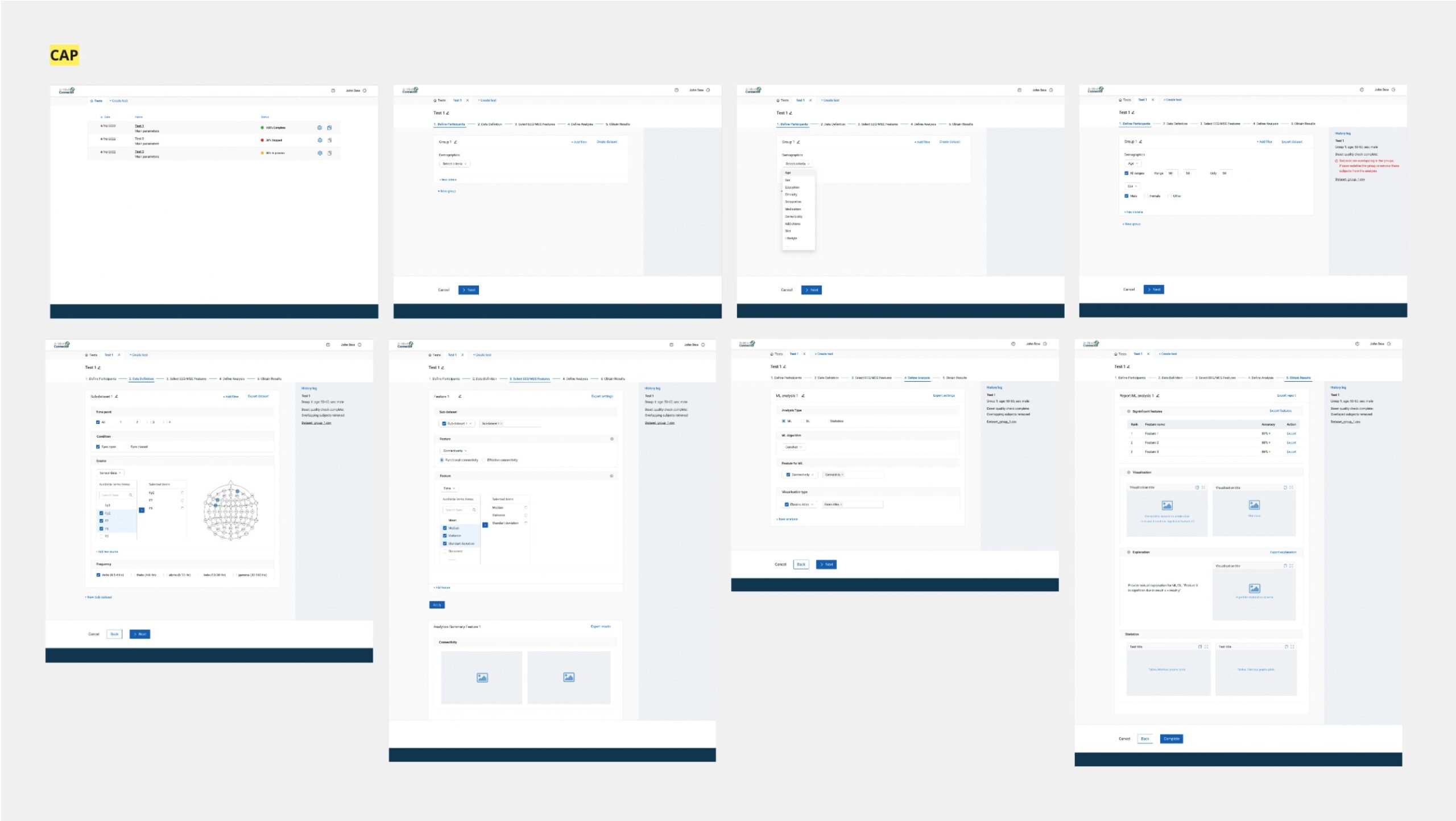
Design-to-development hand-off process
We have created hand-off documentation that outlines UI/UX guidelines for implementation. This documentation includes the system’s style, layout, UI components, text, and overall design patterns.
Furthermore, the design team participated in documenting system requirements to support developers during the system development life cycle.

Impact
Our team has developed UI/UX guidelines for implementation, which serve as a common reference point for understanding user goals, needs, and expectations of AI-Mind digital tools. These guidelines also outline our digital tools’ minimal value product functionality, providing a clear vision for the project’s scope over the next 5 years.
By contributing to the conversation about the project’s scope, our work has helped to ensure that AI-Mind’s digital tools are aligned with our long-term vision and objectives. This approach helps to ensure that our products are not only meeting the needs of our users but also providing value to the organisation as a whole.
Reflections
We achieved positive results by adopting an iterative process that fostered multidisciplinary collaboration. Throughout the design process of AI-Mind digital tools, we found that research and design artefacts were invaluable tools for facilitating communication between stakeholders. To ensure that our design remained aligned with stakeholder needs and objectives, we prioritised updating these artefacts as the process evolved continuously.
Iuliia Paramonova
Tallinn • Estonia • (+372) 5848-12-81 • juparamonova@gmail.com

